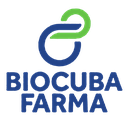Executive Secretary

9th International Scientific Conference on Agricultural Development and Sustainability
10th Symposium of Veterinary Medicine and Zootechnics
Abstract
ABSTRACT
The objective of the work was to evaluate the efficiency of rabbit artificial insemination as a tool for genetic improvement and increase of populations through fertility and pups per birth. In the study, a total of 68 females were used in different scenarios: (Havana and Ciénaga de Zapata), which were divided into two groups: control group (natural mating) and the artificial insemination group, made up of 31 and 37 females. , respectively. To achieve sexual receptivity, an intramuscular dose of 25 IU of Equine Chorionic Gonadotropin (GCe) was applied in both groups. Once the external manifestation of heat was evaluated, he was inseminated with a dose of 0.5 ml of semen previously evaluated, according to his spermatic quality. After AI, ovulation was induced with Gonadorelin via (IM). The data were processed using the statistical package SAS (Statistical Analysis System) version 9.3 of 2013 and a mixed generalized linear model using the PROC GLIMMIX, where the treatment (control and inseminated) was considered as a fixed effect for the fertility and offspring traits. by birth. The fertility of the inseminated females did not present differences with that of the females in natural mating (P≤0.9413). However, for pups per parturition, the inseminated females obtained 1.4 more pups than the control group (P≤ 0.0412). It is concluded that artificial insemination can be an alternative to increase rabbit populations, taking into account the number of pups born per delivery.
Resumen
RESUMEN
El objetivo del trabajo fue evaluar la eficiencia de la inseminación artificial cunícola como herramienta para el mejoramiento genético e incremento de las poblaciones a través de la fertilidad y las crías por parto. En el estudio se utilizó un total de 68 hembras en diferentes escenarios: (La Habana y Ciénaga de Zapata), las cuales fueron divididas en dos grupos: grupo control (monta natural) y el grupo de inseminación artificial, conformados por 31 y 37 hembras, respectivamente. Para lograr la receptividad sexual, se aplicó una dosis de 25 Ul intramuscular de Gonadotropina Coriónica equina (GCe), en ambos grupos. Una vez evaluada la manifestación externa del celo, se inseminó con una dosis de 0,5 ml de semen previamente evaluado, según su calidad espermática. Posterior a la IA, se indujo la ovulación con Gonadorelina por vía (IM). Los datos se procesaron mediante el paquete estadístico SAS (Statistical Analysis System) versión 9. 3 del 2013 y un modelo lineal generalizado mixto mediante el PROC GLIMMIX, donde se consideró como efecto fijo el tratamiento (control e inseminadas) para los rasgos fertilidad y crías por parto. La fertilidad de las hembras inseminadas no presentó diferencias con la de las hembras en monta natural (P≤0.9413). Sin embargo, para las crías por parto, las hembras inseminadas obtuvieron 1.4 crías más que el grupo control (P≤ 0.0412). Se concluye que la inseminación artificial, puede ser una alternativa para incrementar las poblaciones de conejo, teniendo en cuenta el número de crías nacidas por parto.
About The Speaker

Dra. Zahilys López Abreu

Discussion

